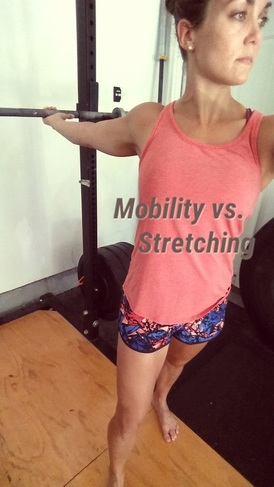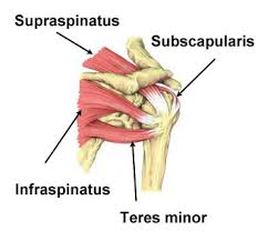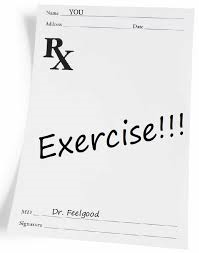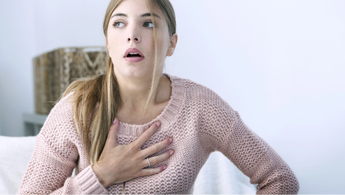|
There are many different options for workouts to try. So what are some of the options if you're interested in trying a new workout routine in a new place?
1) A gym- this is general, but often joining a gym offers a wide range of fitness classes, fitness equipment, and options. This is great if you know how to work out and want a variety of options. For example, they have free weights and machines for strengthening, so you can pick how you would like to work out. They offer various cardiovascular equipment including: bikes, treadmills, elliptical trainers, and step machines. Many gyms offer group classes, where an instructor will guide you through a specific exercise routine, it may be: weights, yoga, pilates, or zumba. Some offer personal training services as well. 2) A boutique gym- Innovative Therapy & Wellness would fall into this category. We offer one-on-one personal training and pilates instruction. This is great if you need someone to guide you through a work out, watch your form, and make sure you won't hurt yourself. You will be closely monitored throughout your routine.
0 Comments
There have been increased reports recently about the overuse and over-prescription of opioids for pain relief, and even deaths from overdoses.
According to the National Institutes of Health (NIH), 25 million Americans suffer from chronic pain, persisting for 3 months or more. On March 16, 2016 the CDC issued new guidelines for prescribing opioids for chronic pain. The US Center for Disease Control (CDC) states “there are better, safer ways of treating chronic pain than the use of opioids”. They also state in their recommendations "The contextual evidence review found that many nonpharmacologic therapies, including physical therapy, weight loss for knee osteoarthritis, psychological therapies such as [cognitive behavioral therapy, or CBT], and certain interventional procedures can ameliorate chronic pain." These new guidelines were created as a response to a growing incidence of opioid overdose and an increase in them being prescribed. The American Physical Therapy Association (APTA) is in support of the new guidelines, contributing that often PT services are underutilized as a treatment for pain. Although these guidelines are meant for physicians prescribing opioids as a first treatment for pain, they are still useful to be aware of. They highlight the importance and effectiveness of non-opioid options, including physical therapy. More information can be found at www.cdc.gov and www.apta.org.  Everyone in the athletic world has heard about stretching, and most people have heard the term mobility, but let’s talk about what they are specifically and how they apply to you. For our purposes we will break stretching down into static and dynamic. Static stretching is moving into a posture slowly and holding it with the purpose of muscle elongation anywhere from thirty seconds up to two minutes. Static stretching should be performed after your workout or sport activity. Research has shown that to get the most benefit from your static stretch you should hold it for one minute or longer. Dynamic stretching or mobility work should be performed before your workout or activity and consist of drills that are sport specific or specifically prepare you for your workout. For example, if you are going to go run sprints it would be appropriate to warm-up with something like high knee and skipping drills to mobilize the hip musculature and mirror the activity you are about to perform. If you are going to be performing push-ups then some chest opening drills may be in order like the one seen here in the photo. This picture is a still frame shot and it could be assumed this is a static stretch. Indeed it is but we can also use it as a mobility drill and to prep for our activity. This is done by taking the right leg and stepping forward to open the chest wall and then back to relieve the stretch off the chest wall. Try both. First, do your mobility work and perform the chest step through 15x on each side. Then, after your workout, try holding this posture while performing diaphragmatic breathing to aid in relaxation of the muscles. Hold the stretch for one minute. You might ask what is diaphragmatic breathing? We’ll go over the basics next blog. What is it?
The rotator cuff is actually made up of 4 different muscles surrounding the shoulder: the infraspinatus, supraspinatus, subscapularis, and teres minor. These muscles collectively function to add compressive forces to the humeral head and contribute to stabilization of the glenohumeral (shoulder ball and socket) joint. They need to be strong and flexible in order to allow for full range of motion and function of the shoulder girdle. How is it injured and treated? These muscles are negatively affected by poor posture and positioning of the shoulder complex as well as weakness, and can be subject to overuse injuries and aggravation leading to small or large tears or tendonitis, which is inflammation. Often, patients respond well to conservative treatment including physical therapy, pain and inflammation management, and rest. In physical therapy, emphasis is placed on restoring proper biomechanics and joint movements, as well as addressing dysfunction and trigger points in the muscles. The muscles will then gradually be strengthened with proper form, including specific external and internal rotational strengthening, scapular stabilization, and overall functional strengthening. Sometimes, a steroid injection is required to help calm the area depending on the severity of the injury. If a severe tear is present, and conservative measures are unable to fully restore function and reduce pain, surgical intervention and repair may be required. Generally speaking, patients with minor tears and overuse injuries respond well to physical therapy interventions. Hope this helps you understand a little more about what the rotator cuff is and how it is treated. Many people ask "which pillow is the best for me?" There are many choices out there, and each person is unique with their body and situation, but here are a few helpful guidelines. Your pillow should be supportive to your structure. If you are a “back sleeper”, it is helpful to have a slightly firmer pillow so your neck is fully supported, but not propped up so much that your head tilts forward (no chin to chest movement).
If you are a “side sleeper”, you may need to experiment with proper thickness and support Have you ever had questions about pelvic health? Do you have increased urinary frequency, leakage, or the sudden urge to go to the bathroom? What about pain or discomfort? All of these are issues that can be addressed with pelvic floor rehabilitation. Pelvic floor rehabilitation is a unique type of physical therapy addressing the muscles inside your pelvis, which are important for maintaining continence and providing stability to your pelvic region. If these muscles aren’t working properly, dysfunction occurs, including incontinence or increased urge to urinate, or pain. Over time, this can worsen with continued abnormal patterns. Some tips to maintain good bladder health are as follows:
Is your workout due for an annual checkup? Most of us don’t think twice about getting an annual physical or seeing the dentist, eye doctor, and various other healthcare specialists for our yearly checkups. But, have you ever thought about an annual fitness physical? Hmm. Maybe you should!
Recommendations for regular exercise, increased aerobic training, or targeted strength training are everywhere. You may have even heard it from your doctor. But these recommendations often lead to more questions than answers. What exercise is appropriate? |
AuthorsA collaborative effort from the experienced staff at IT&W Archives
May 2023
Categories |
Blog updates |
|
2224 Virginia Beach Blvd Suite 106, Virginia Beach, VA 23454






 RSS Feed
RSS Feed

